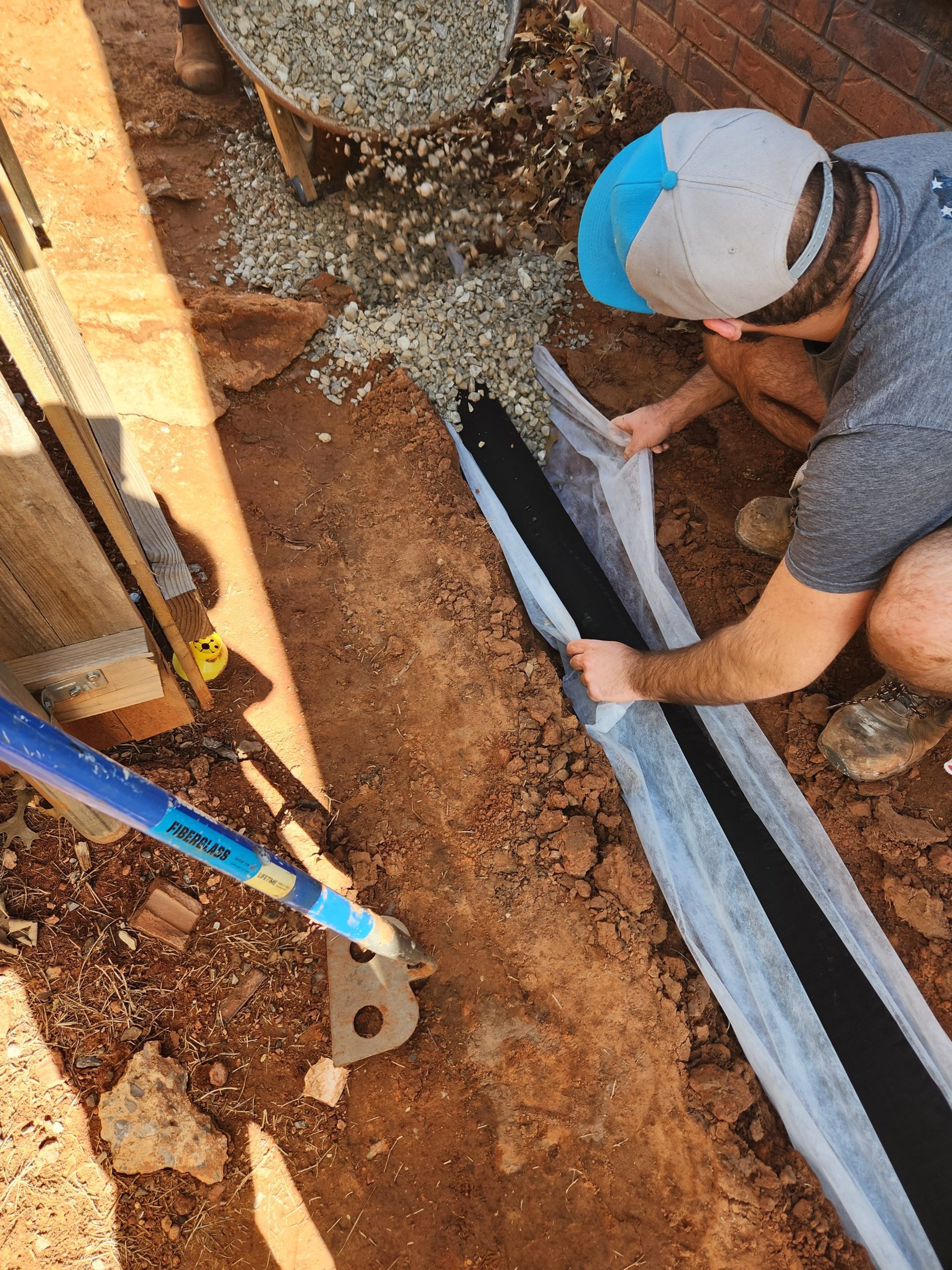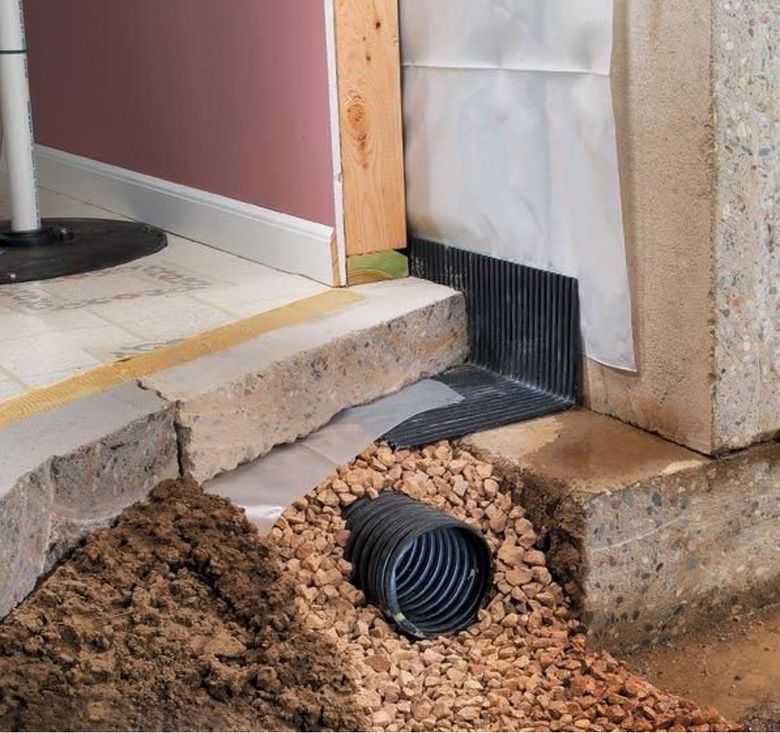Top Benefits of Adding a Portland French Drain Beside Your Home
Wiki Article
The Essential Guide to Keeping Your French Drainpipe for Lasting Efficiency
Keeping your French drainpipe is crucial to its effectiveness and your residential or commercial property's security. Normal checks can conserve you from expensive repair services and water damage. You'll would like to know what indications to search for and how frequently to inspect your system. And also, recognizing the cleansing procedure can make a considerable difference. Allow's explore the necessary actions for guaranteeing your drainpipe functions well for several years ahead.Comprehending the Function of a French Drainpipe
A French drainpipe is a vital element in managing water around your home. It routes excess water far from your foundation, protecting against flooding and damages. When heavy rainfall falls, the drain accumulates water with a perforated pipeline buried in gravel. This system permits water to stream freely, lowering pressure on your basement walls and lessening the risk of leaks.You could wonder just how it functions in practice. As water fills the soil, gravity pulls it towards the drain. The perforated pipeline records this water, delivering it to a designated drain area or storm sewage system. This process maintains your yard completely dry and protects your home's architectural integrity.Understanding just how a French drain features is key to valuing its importance. By effectively carrying water away, it helps preserve a risk-free and completely dry living setting. So, keeping your French drainpipe in leading condition assurances you stay clear of costly repair services down the line.Regular Evaluations: What to Try to find
When you're inspecting your French drainpipe, beginning by looking for any blockages that could be blocking water flow. Take note of indicators of surface area erosion around the drainpipe, as this can show potential problems. Normal analyses will assist maintain your water drainage system operating effectively.Clogged Drain Evaluation
Exactly how can you inform if your French drainpipe is obstructed? Watch for water pooling in your yard, especially after heavy rainfall. If you notice locations where water accumulates rather than draining pipes, that's a red flag. You must likewise inspect the drain electrical outlet; if water isn't draining as it should, there's most likely an obstruction. Listen for unusual gurgling audios, which can show trapped air. Furthermore, examine the drainpipe's surface area for any type of greenery development, as origins can obstruct the system and penetrate. Lastly, if you smell stuffy smells, it could point to stationary water triggered by a blockage. Routinely evaluating these indicators can assist you keep your French drain efficiently and protect against expensive fixings.Surface Area Erosion Examine

Cleansing Your French Drain: Step-by-Step Guide
Cleaning your French drainpipe is necessary for keeping it working effectively. You'll need some certain tools and a clear process to assure everything runs efficiently. Allow's go through the actions and suggestions for keeping your drain efficiently.Devices You'll Require
To take on the task of cleaning your French drain successfully, you'll intend to collect a couple of essential tools. First, get hold of a tough pair of gloves to safeguard your hands from debris and sharp items. A small shovel or trowel will aid you get rid of dust or clogs around the drainpipe. For removing out the interior, a plumbing technician's serpent or a high-pressure water nozzle can be exceptionally beneficial. You'll likewise require a container for gathering any type of debris you pull out. Finally, having a yard tube accessible will certainly make it less complicated to wash out the drainpipe and ensure it's streaming smoothly. With these devices all set, you'll be established for a complete cleansing session!Cleansing Refine Steps
Start by evaluating the location around your French drain for any noticeable particles or blockages. Remove fallen leaves, branches, or dirt that may block water flow. Next off, inspect the inlet and outlet locations; clear any kind of obstructions to assure correct drain. Use a yard hose pipe to purge the drainpipe, directing water right into the inlet. This assists displace any type of built up sludge or debris. If you observe consistent clogs, think about using a plumber's serpent to break them up. After cleansing, examine the crushed rock around the drain; restore it if it's washed away. Validate the drain covers are undamaged and securely in location to protect against debris from going into. Normal cleaning maintains your French drainpipe working effectively.Maintenance Regularity Tips
While normal upkeep is vital for your check my blog French drain's long life, knowing exactly how usually to maintain it can make all the difference. Ideally, you need to inspect your French drain at the very least two times a year, ideally in spring and fall. After heavy rains or snowmelt, look for clogs or particles. If you discover any type of standing water, it's time to cleanse your drain.In locations with hefty foliage, more frequent upkeep-- regarding every three months-- may be required. In addition, consider cleaning your French drain after major storms or if you observe water pooling in your yard. By staying positive, you'll ensure your French drain functions successfully and secures your home from water damage. Routine checks will save you money and time in the long run.Determining Typical Problems and Their Solutions
When you observe water merging in your lawn or damp areas in your basement, it's important to identify common issues with your French drain and implement effective solutions. One regular issue is clogging, frequently triggered by particles like fallen leaves or sediment. To Learn More Here fix this, you can use a pipes serpent or a high-pressure water jet to clear blockages.Another issue could be inappropriate incline. Water won't flow away from your home if your drainpipe isn't sloped appropriately. You can change the slope by excavating and rearranging the drain pipe.Lastly, look for damages or cracks in the drainpipe itself. Replacing the harmed sections is important for peak efficiency if you find any kind of. By resolving these problems quickly, you'll aid ensure that your French drain proceeds to function properly, safeguarding your residential or commercial property from water damages and preserving a dry, risk-free setting.Seasonal Upkeep Tips for Your French Drain
Attending to common concerns with your French drain is simply the very first step in ensuring its long-lasting efficiency. Seasonal upkeep is vital for peak performance. In the spring, clear away leaves and debris that may have accumulated during winter. Inspect for any blockages in the outlet or catch container, as water requires a clear path to move freely.During summertime, check your drainpipe for any type of indicators of moving or clearing up dirt. Make sure it's still level and operating correctly. As loss techniques, clean any type of dropped leaves to stop clogs before wintertime arrives.In winter months, look for freezing temperatures. Make certain your drain isn't at danger of cold if you live in a chilly environment. Insulating subjected pipes can help. Routine checks and timely upkeep can avoid costly repair work and maintain your French drainpipe functioning effectively year-round. Remain positive and take pleasure in assurance understanding your drainage system is in good condition!When to Hire an Expert
Recognizing when to hire a professional can conserve you time and protect against further damages to your French drain. If you see consistent standing water in your backyard, it's a clear indicator that your drain may be blocked or harmed. Don't ignore weird smells, as they can indicate sewer back-up or decay, which requires prompt attention.If you discover that your drain isn't working appropriately after attempts to clean or preserve it, it's time to reach out for specialist aid. Additionally, if you're uncertain regarding the underlying problems or do not have the essential devices, working with a professional can give tranquility of mind.Finally, if your French drainpipe is old or has actually experienced considerable damage, professional analysis can figure out whether repair work or total replacement is needed. Trust fund the like this experts to assure your drainage system functions efficiently for years ahead.Tips for Avoiding Future Drainage Troubles
To keep your French drain functioning effectively, consistently evaluating and keeping it can make all the difference. Beginning by clearing particles, leaves, and dust from the surface and drain openings. This avoids clogs that can bring about water backup. Inspect the gravel around the drainpipe; if it's compressed or deteriorated, think about adding fresh crushed rock to maintain excellent flow.Next, divert water far from your drainpipe by making sure downspouts and gutters are clear and guiding water at the very least 3 feet away from your structure. On a regular basis examine for any type of signs of damages or sagging. If you see concerns, address them immediately.Finally, take into consideration installing a catch or a filter basin to trap bigger debris before it gets in the drain. By staying aggressive with these pointers, you'll decrease the threat of future drain problems and maintain your French drainpipe in leading form.Often Asked Inquiries
For how long Does a French Drainpipe Usually Last?
A French drainpipe normally lasts around 30 to 40 years, depending upon the materials made use of and maintenance (Portland French Drain). If you stay on top of normal checks, you can prolong its lifespan even betterCan I Mount a French Drainpipe Myself?
Yes, you can mount a French drain yourself if you have actually got the right tools and understanding. Just ensure to plan very carefully, adhere to regional guidelines, and assurance proper water drainage to stay clear of future issues.What Materials Are Utilized in a French Drain?
You'll require perforated pipeline, crushed rock, landscape material, and a strong drain pipeline for your French drain. These products help redirect water effectively, avoiding flooding and maintaining your residential property secure and dry from water damages.
Is a Permit Required to Set Up a French Drain?
You'll likely require a license to set up a French drainpipe, relying on regional guidelines. Examine with your town to guarantee you adhere to any type of needed standards and prevent prospective problems during installation.What Are the Prices Linked With French Drain Upkeep?
Maintaining a French drain generally costs between $100 and $500 each year. You'll require to consider expenses for cleaning, fixings, and assessments. Regular maintenance aids stop bigger expenses and assurances your system functions correctly for many years - Portland French Drain. When you're checking your French drain, begin by checking for any kind of blockages that may be blocking water circulation. By remaining proactive, you'll guarantee your French drain features successfully and safeguards your residential property from water damage. When you discover water merging in your yard or damp spots in your basement, it's important to determine common issues with your French drain and implement reliable remedies. You can change the slope by excavating and repositioning the drainpipe pipe.Lastly, check for damages or cracks in the drain itself. Inspect the crushed rock around the drainpipe; if it's compressed or worn down, take into consideration including fresh crushed rock to preserve optimal flow.Next, draw away water away from your drainpipe by guaranteeing rain gutters and downspouts are clear and directing water at least three feet away from your foundationReport this wiki page